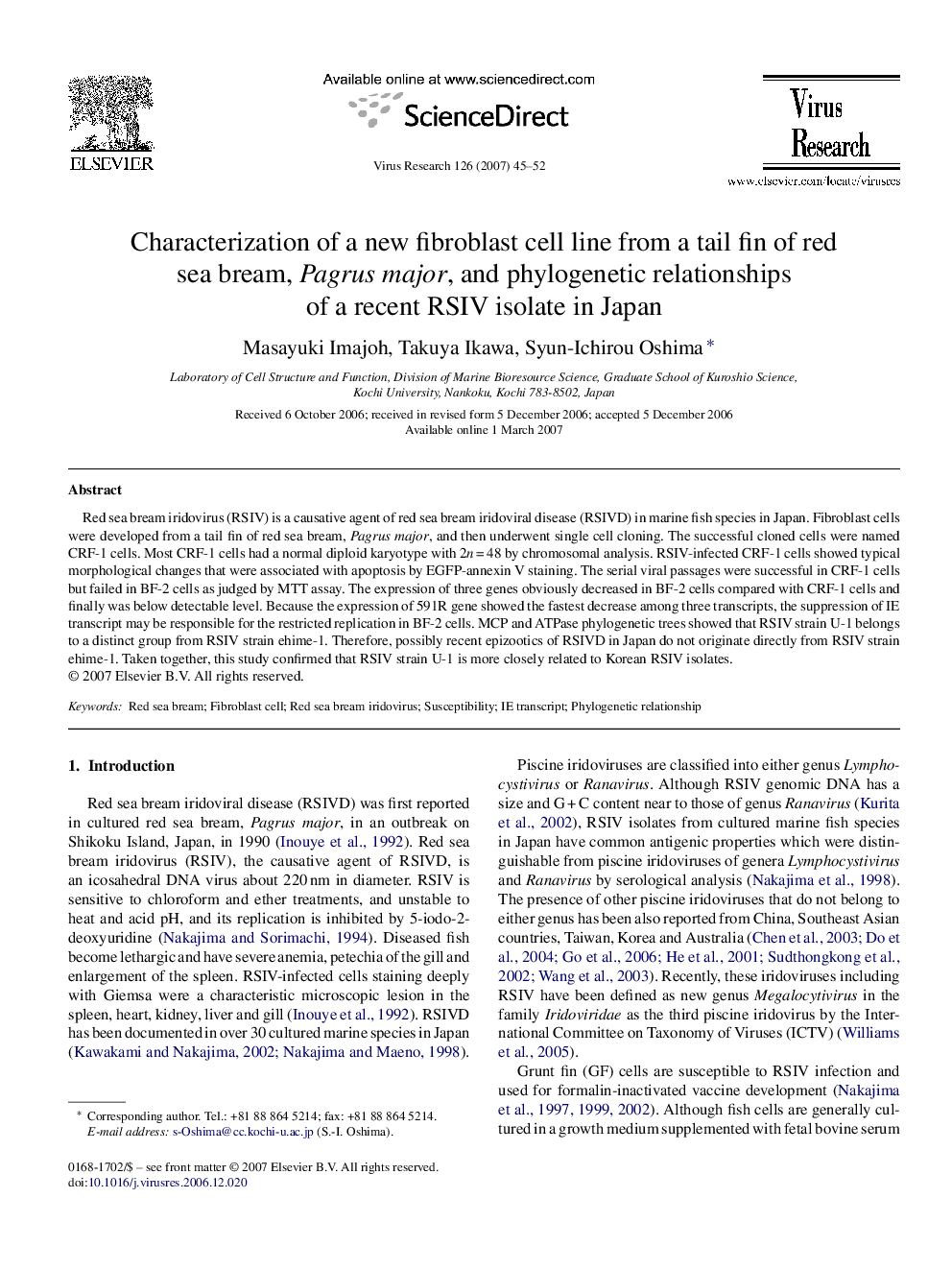| Article ID | Journal | Published Year | Pages | File Type |
|---|---|---|---|---|
| 3430894 | Virus Research | 2007 | 8 Pages |
Red sea bream iridovirus (RSIV) is a causative agent of red sea bream iridoviral disease (RSIVD) in marine fish species in Japan. Fibroblast cells were developed from a tail fin of red sea bream, Pagrus major, and then underwent single cell cloning. The successful cloned cells were named CRF-1 cells. Most CRF-1 cells had a normal diploid karyotype with 2n = 48 by chromosomal analysis. RSIV-infected CRF-1 cells showed typical morphological changes that were associated with apoptosis by EGFP-annexin V staining. The serial viral passages were successful in CRF-1 cells but failed in BF-2 cells as judged by MTT assay. The expression of three genes obviously decreased in BF-2 cells compared with CRF-1 cells and finally was below detectable level. Because the expression of 591R gene showed the fastest decrease among three transcripts, the suppression of IE transcript may be responsible for the restricted replication in BF-2 cells. MCP and ATPase phylogenetic trees showed that RSIV strain U-1 belongs to a distinct group from RSIV strain ehime-1. Therefore, possibly recent epizootics of RSIVD in Japan do not originate directly from RSIV strain ehime-1. Taken together, this study confirmed that RSIV strain U-1 is more closely related to Korean RSIV isolates.
